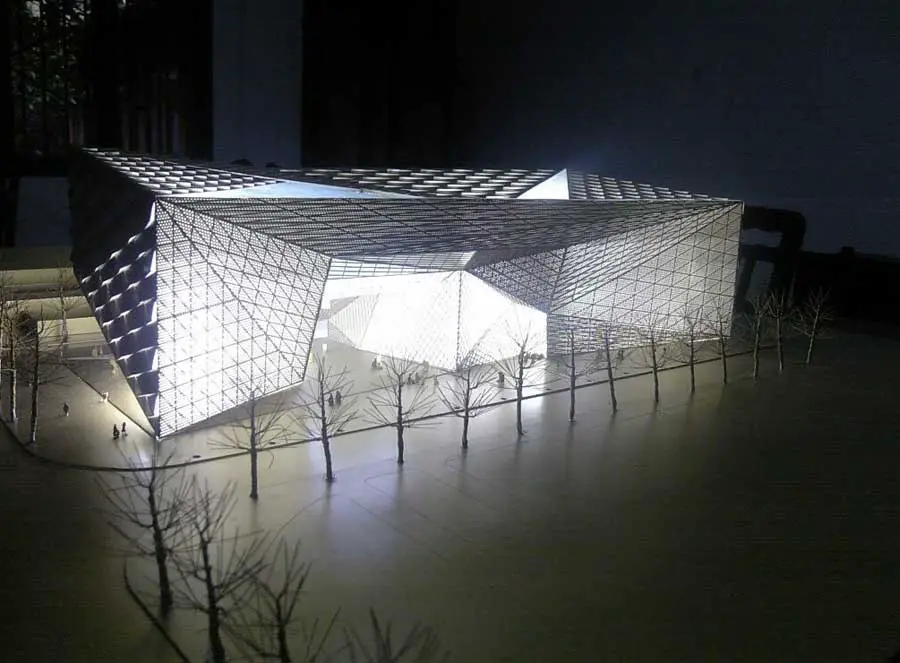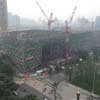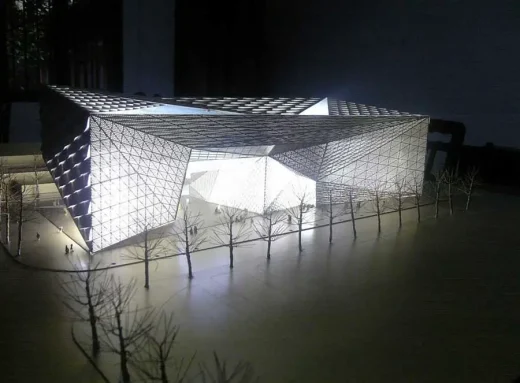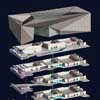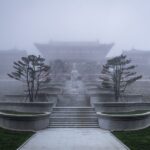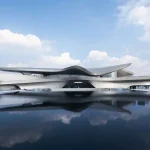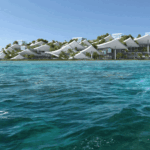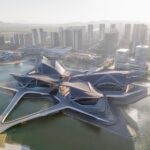Chengdu City Museum Design Architect, Pictures, Chinese Architecture Competition News
Chengdu Museum Building, Sichuan
Chengdu Museum building, Szechuan design by Sutherland Hussey Architects
post updated 5 October 2024
Latest photo of construction – in July 2012:
Latest images of the proposal, 2010:
Architecture competition won by Sutherland Hussey Architects to design a new museum for the Capital of Sechuan Province in China: Chengdu
Chengdu Museum building design by Sutherland Hussey Architects
10 Dec 2007
Chengdu City Museum
Design: Sutherland Hussey Architects with Pansolution International Design
Sutherland Hussey Architects, in collaboration with Pansolution International Design, have been awarded first prize in the international competition for the design of the new City Museum for Chengdu, Sichuan, China.
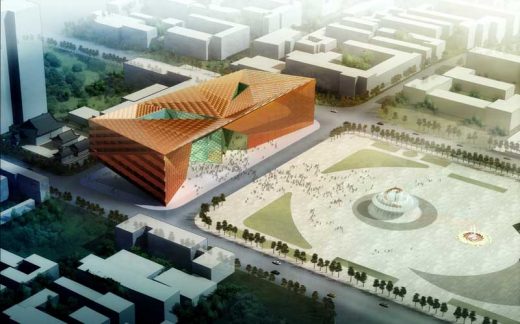
image from Sutherland Hussey Architects
The Museum requirements extend to over 70,000m2 of development and will include exhibition space for Natural History, History and Folk, and Chinese Shadow Play as well as a large area for Temporary Exhibition.
The proposed site for the new Museum sits along the full extent of the west edge of Tian Fu Square. It is approximately 180 metres long and 70 metres wide and is separated from the main Square by a five lane road, lined with large, mature trees. It is a hugely significant site, forming one complete edge of the most important Square in the City.


images from Sutherland Hussey Architects
The Proposal
The New City Museum will be the most important cultural building in Chengdu and needs to assert itself on the Tian Fu Square against a backdrop of ever-increasing commercial development. As part of our overall masterplan for the square we propose an agreed datum corresponding to the adjacent Mayor’s building be established for three sides of the square, whilst along the southern edge, commercial developments are allowed to go significantly higher. With this in mind our proposal obeys strict adherence to a 36 metre datum along the full length of the front façade.
The proposal includes the creation of two pedestrian routes through the site – one taking people from the southwest corner of the site to the centre of the square, the other taking people from the northwest corner of the site to the centre of the square.
These have been created to make this large city block more permeable, enabling shortcuts through the building, taking people away from the pollution of the sidewalks, and enabling them to engage more directly with the activities and artefacts inside the museum.
Though both routes offer short-cuts through the block they are otherwise very different in character:
The Southwest Concourse is a monumental opening through the building, offering a large, covered outdoor space opposite the City Mosque where people can gather, cultural events can take place, and the market stalls can extend into, with the intention of giving the Mosque a large civic forecourt appropriate to its cultural status.
It also creates a direct route to the main entrance of the Museum and allows the passer-by to engage directly with the inside of the building. We propose that the café opens directly onto this covered space, so that people can continue to eat and drink outside even in wet weather and enjoy an aspect both to the Mosque and to the Square. A large roof-light is located over this space to provide generous natural light to below.
The northwest route is clearly of secondary importance and is conceived of as a traditional arcade. Much lower and narrower in dimension, it is lined with small-scale, boutique shops. These will hopefully have a thematic relationship to the museum and might include small bookshops, antique and jewellery shops.
A narrow slot in the ceiling of the arcade rises up through the building providing natural light to both the public route and into the display areas of the museum, and offers the passer-by glimpses of the exhibits above.
The main entrance to the Museum is located at the junction of the two routes. On entering the building, the main reception Hall looks over a large void which extends down through the basement levels and steps up to the roof in an ever increasing volume, providing natural light and orientation to all levels of the Museum.
A large glazed south façade provides light and views into the entrance foyer whilst further natural light is provided via a large roof-light which punctures through the top floor accommodation. The lifts and escalators are located within this void to provide a clear and direct circulation system for the building, and a dramatic and sculptural visual focus to the entrance.
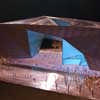
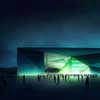

images from Sutherland Hussey Architects
Gold-wrapped Jade
It is intended that the identity of the building refers back to artefacts once found in ancient Shu, and in particular those made from bronze, gold and jade.
There are essentially three materials that make up the composition of the external facade:
First the outer carapace made from solid brass alloy panels, patinated to reflect the passing of time and the effects of weather, and alluding to the ancient bronze containers. This comprises of a series of panels that are almost akin to fish scales as they lift up to allow natural light into the building.
This carapace wraps around a translucent ‘veil’ made from a perforated brass alloy mesh, giving the external skin an intense golden colour. At night the mesh becomes more transparent and transmits a golden glow alluding to the Sichuan tradition of shadow-play.
The third material is the glass enclosure of the entrance foyer which will appear ‘jewel-like’, as if made of jade, as it nestles within the golden wrapping of the main body of the building.
Chengdu Museum images / information from Sutherland Hussey Architects
Location: Chengdu, China
Architecture in China
China Architecture Designs – chronological list
Chinese Architect Studios – Design Office Listings
Chengdu Buildings
Chengdu City Music Hall Complex, Wuhou – wins World Architecture Festival Award
Architect: Andrew Bromberg at Aedas
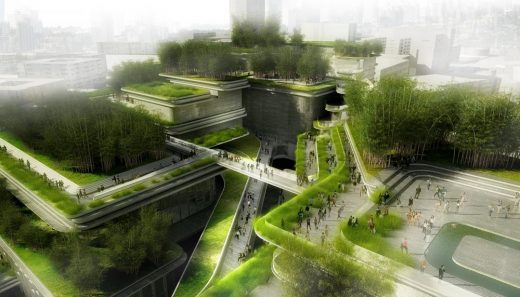
image from architects
Chengdu City Music Hall Complex
Architects: Neri&Hu
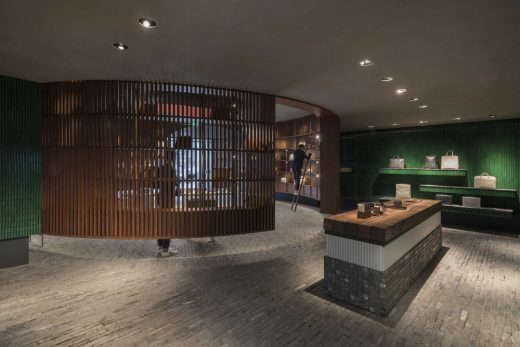
photography : Pedro Pegenaute
Valextra Flagship Store
Design: Steven Holl Architects
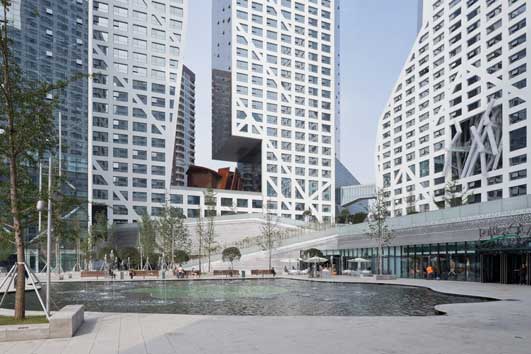
photo © Iwan Baan
Chengdu Complex
Design: Massimiliano and Doriana Fuksas
Chengdu Tianfu Cultural Centre
Design: Adrian Smith + Gordon Gill Architecture
Chengdu Tianfu Great City
Design: Steven Holl Architects
Linked Hybrid
Design: Nikken Sekkei
Bank of Chéngdu Headquarters
Comments / photos for the Chengdu Museum building building design by Sutherland Hussey Harris page welcome.

